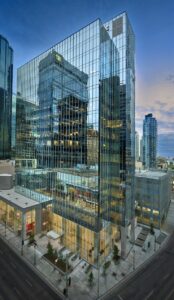As part of the Schneider Electric Green Glass team, my colleagues and I frequently connect with glass industry stakeholders. The more we learn about their business challenges, the more motivated we are to help them decarbonize their operations. The GlobeNewswire expects the container glass market to grow to $78.37 billion by 2026, a 5.46% compound annual growth rate (CAGR).
As marketplace demand ramps up, so does production, and the energy-intensive container glass plants produce higher carbon emissions. The U.S. Environmental Protection Agency (EPA) reported that 41 U.S. container plants alone collectively emitted nearly 3 million metric tonnes of carbon dioxide equivalents (CO2e). The International Energy Agency (IEA) further reported that global glass manufacturers annually contribute around 86 million metric tonnes of CO2 emissions.
To address emission challenges, the industry actively seeks solutions to lower energy consumption and reduce greenhouse gas (GHG) emissions. Globally, technology companies like Schneider Electric are developing solutions to help glass manufacturers electrify operations. The European Container Glass Federation suggests container glass factories replace 80% of traditional natural gas furnace fuel input with green electricity to help reduce CO2 emissions by 50-60%.

The building blocks for producing green glass
I recently participated in a Glass Worldwide magazine interview with two of my colleagues, Gary Cafe and Alex Richards, to discuss how we, as a company, can support manufacturers in lowering their emissions. Below are some of the questions we addressed:
Q: How does Schneider Electric support the glass industry?
A: We offer process control and energy management solutions and decarbonization consulting. As digital transformation takes hold across the industry, new opportunities for energy consumption reduction are emerging, both upstream and downstream of the core glass furnace melting process (where fossil fuel-driven furnaces are being replaced with electric furnaces). We understand issues such as how much power can safely enter a facility and how it can be applied effectively to the right processes while minimizing energy losses. Heat transfer and electrification efficiency are critical success factors as glass plants transform.
In related industries, our procurement and risk management teams trade €30 billion per annum of power, gas, and carbon on behalf of our clients globally and have saved our clients more than €10 billion to date. We understand the intricacies of the market and are active in optimally managing power, renewables, and natural gas infrastructures that drive these industries.
Electrification of glass industry processes allows our clients to establish long-term energy security through renewable Power Purchasing Agreements – spreading their risk and increasing their opportunity.
Q: What are some examples of glass plant operational areas where savings can be realized?
A: On the design engineering side, new-generation simulation tools can expedite power and automation systems development cycle times and predict their efficiency before they are commissioned. For example, the ETAP digital twin enables electrical power systems modeling to optimize efficiency while maximizing safety.
From an operations perspective, we automate drives that run conveyor belts in a way that enables advanced process and energy controls. Sensors capture data, and software tools consolidate that data in the cloud, using artificial intelligence (AI) and machine learning techniques to analyze that data to drive the highest possible performance levels. On the post-installation support side, we offer digital services based on predictive maintenance techniques that help minimize maintenance costs through fewer required on-site service calls and lower unanticipated downtime risks by identifying potential faults before they result in failures and stoppages.
Q: When digitizing operations, what strategic pillars lower transitional risk and increase the odds of success?
A: The first pillar is tighter power and process convergence. Digitization enables the seamless unification of these once-separate domains throughout an asset’s lifecycle. Connected power and automation systems communicate with each other automatically. This enables the systems to talk to each other across the plant and communicate to humans at the operation and management levels of the plant via dashboards.
The second pillar is establishing a robust ecosystem of partners. No company can do it alone when transitioning to green glass operations. We utilize our partner network, including our own global software brands like AVEVA and ETAP, and local accredited process OEMs and systems integrators to assist our clients in their transformation journey.
The third success pillar is migrating to more open systems. The vendor-agnostic nature of universal automation means better interoperability. Reusing existing assets in modern contexts–regardless of the supplier who produced them–provides an easy and cost-effective method for keeping systems flexible and up-to-date. New tools based on the open IEC 61499 standard, such as the EcoStruxure™ Automation Expert platform, make it possible to securely leverage the advanced connectivity that comes with digitalization.
Q: What qualifies your team as an expert in these areas?
A: We bring a complete lifecycle consulting portfolio in sustainability and cleantech, process electrification, energy procurement, and digital transformation. When working with clients, we help balance manufacturing profitability while decarbonizing operations. Digital transformation is often about more than just the technical solution. The ability to bring the right expertise and unique skills to help formulate the best roadmap is crucial to success.
To learn more about how Schneider Electric can help to decarbonize your glass manufacturing operations, download our Green Glass Transformation handout.




Add a comment